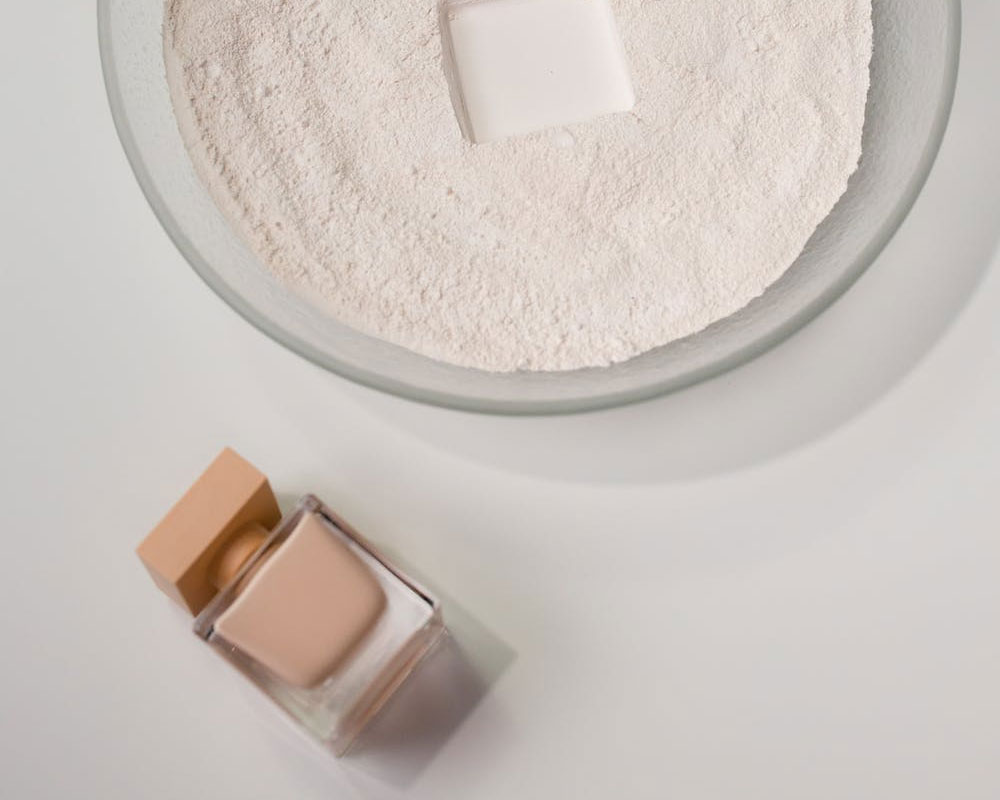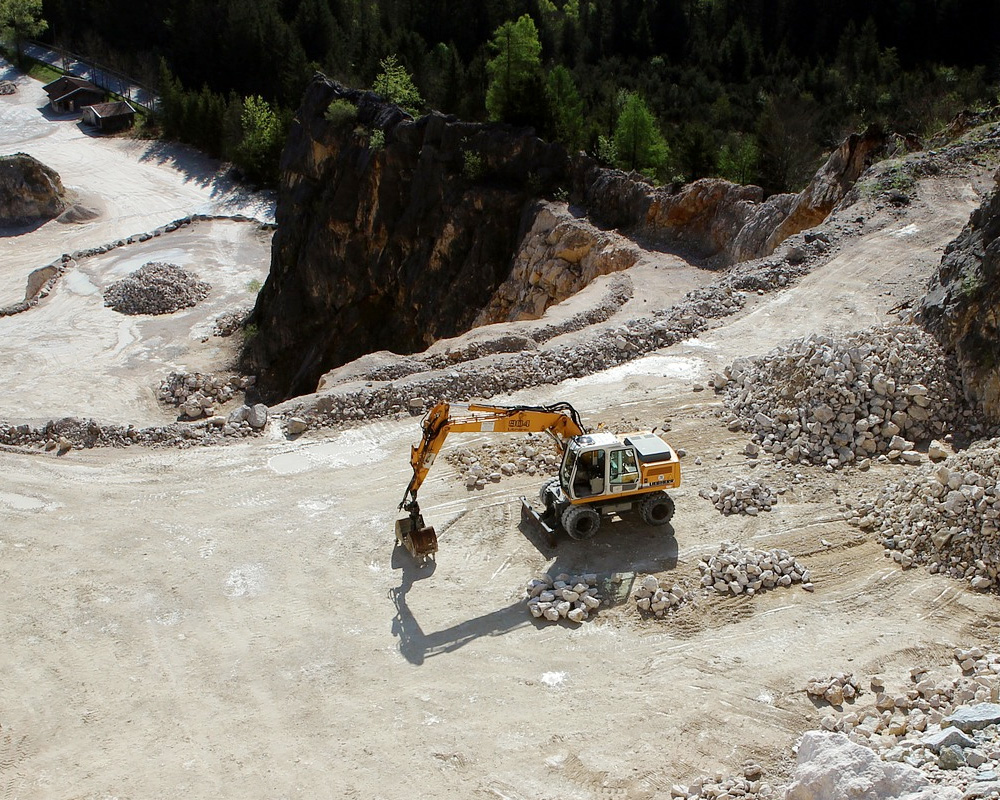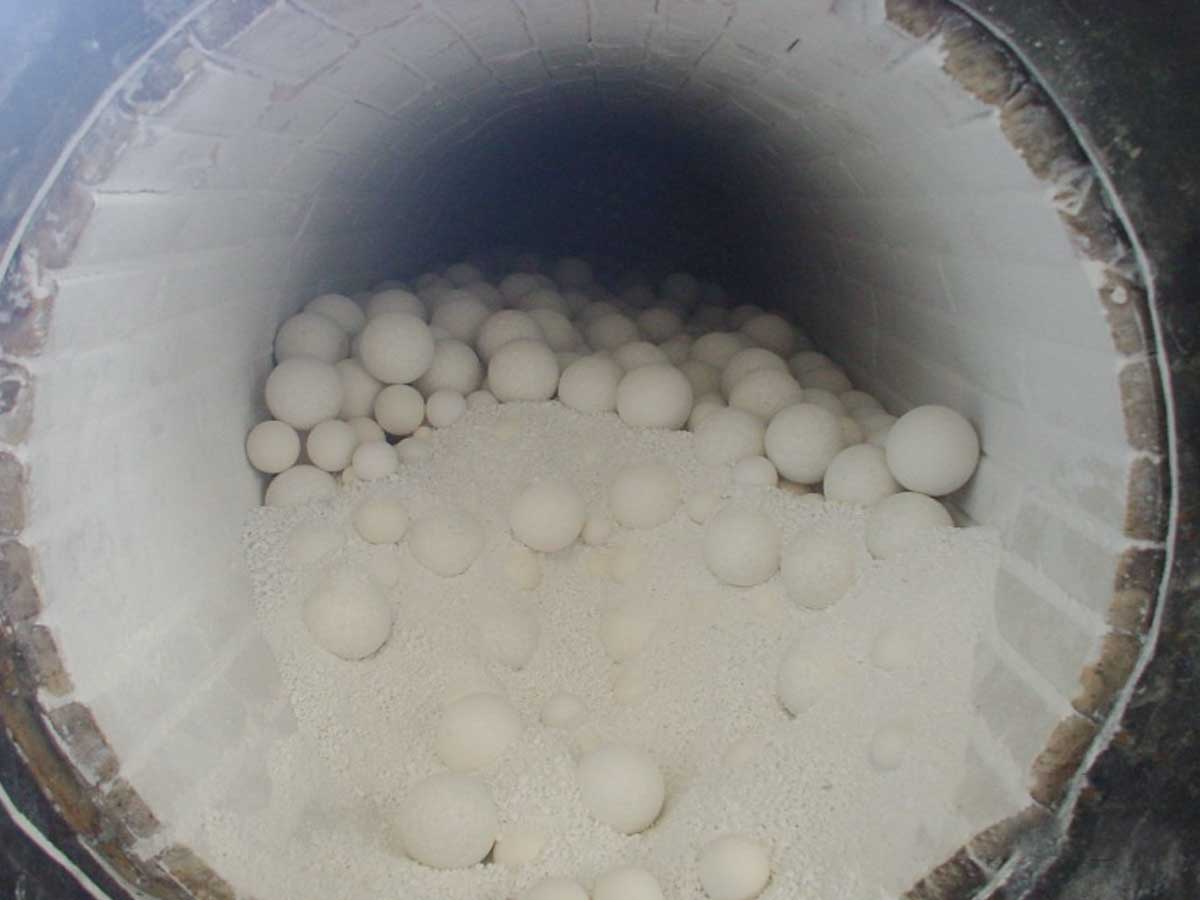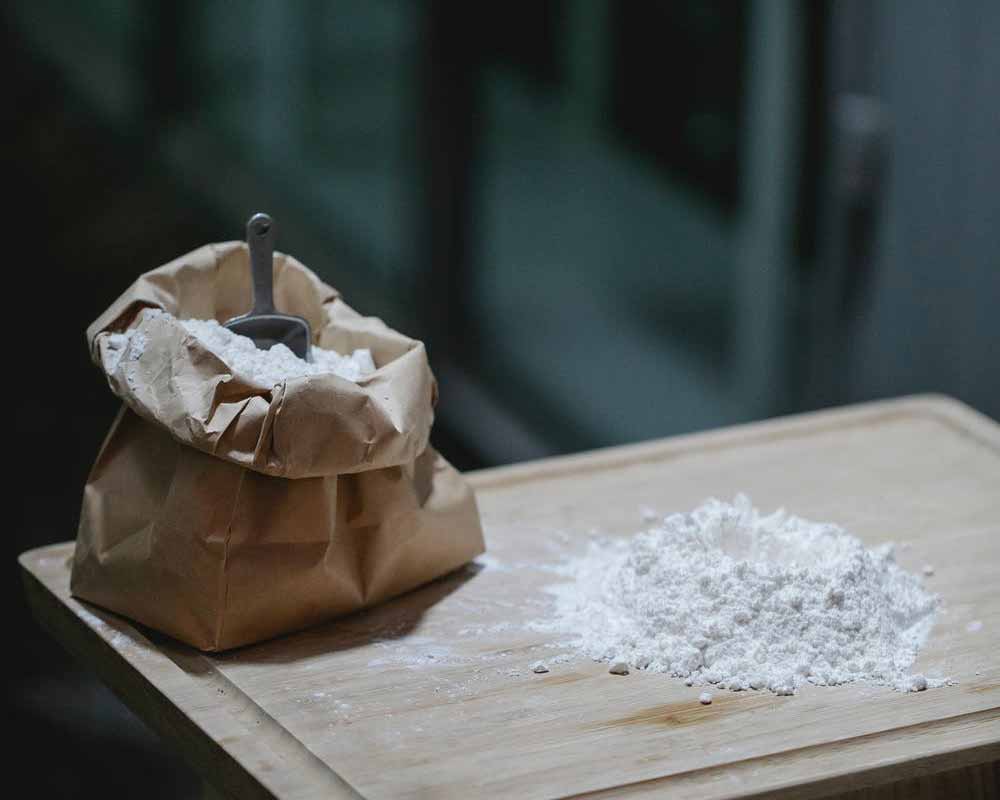Nitrogen circulation protection system to eliminate potential safety hazards
Nitrogen shielded jet mill is based on a fluidized bed jet mill, using nitrogen or carbon dioxide as the grinding working medium, consisting of a nitrogen compression system, a nitrogen filtration system, a crushing system, a classification system, a collection system, a feeding/unloading system, Nitrogen purity test supplement system, nitrogen generation system and electrical control system.
The entire production line of the nitrogen shielded airflow crusher equipment adopts a fully enclosed negative pressure operation, and there will be no dust and dust pollution on the production site. Using PLC programming control, safety measures are multi-pronged and work in parallel, and only one of the measures is effective to prevent potential safety hazards.
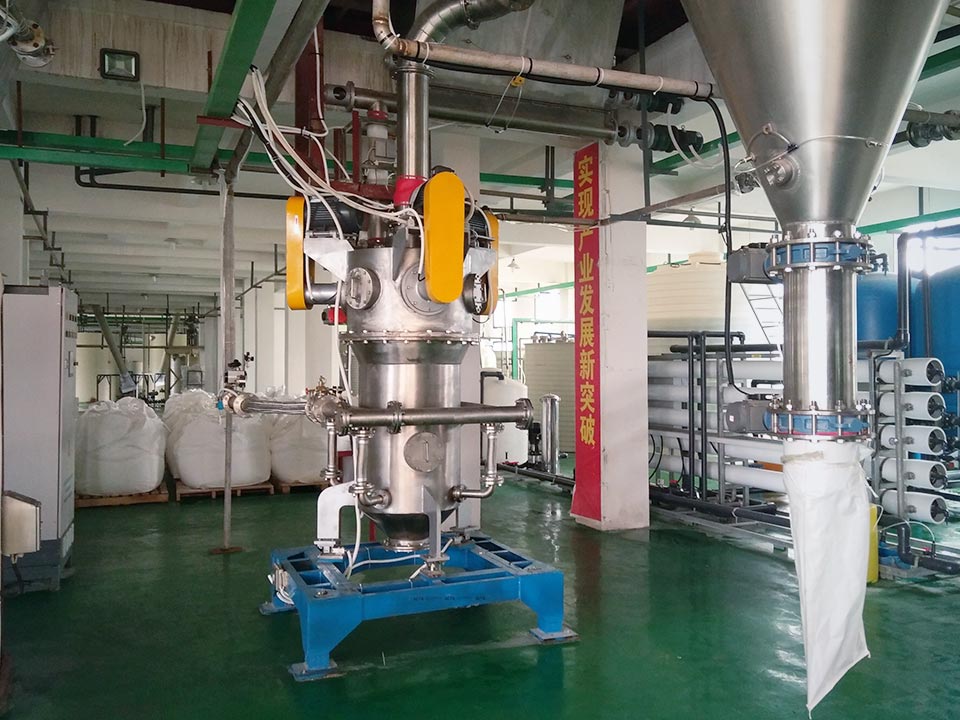
The system can process a variety of materials with strong wear resistance and low wear. After the internal protection of the equipment, the product has no iron pollution. The hierarchical flow field technology can obtain the best grinding efficiency and strict particle size distribution, and the grinding particle size can be adjusted arbitrarily between 3-74 microns.
Features:
- The scope of application is wide. According to the characteristics of flammable, explosive and oxidizable powder, suitable inert gas can be selected as protective gas.
- The purity of the inert gas can be controlled according to process requirements and product characteristics.
- The inert gas is recycled, with low loss and low cost.
- Reasonable cooling flow field, lower system air temperature, especially suitable for processing heat sensitive low melting point materials.
- The use of new end face gas sealing technology ensures uniform particle size distribution and improves classification accuracy.
- Optimize the structure of the equipment and improve the performance of the equipment, which can effectively disperse and separate the agglomerated ultrafine powder and polymer.
- Optimized grading impeller structure, uniform, stable and complete flow field, low pressure loss of impeller, and accurate classification of materials.
- Fully sealed operation, pulse automatic dust removal, high-precision filter material filtration, high collection efficiency.
- The nitrogen shielded jet mill can also be used to disperse metal powder agglomerates, such as iron powder, cobalt powder, titanium powder, alloy powder, etc., to ensure the stability of raw material properties while breaking up.
[Powder in life] Talc is everywhere
Talc gets its name because of its soft texture and strong creaminess. It is a water-containing magnesia silicate mineral with a layered structure, mainly containing magnesium silicate, alumina, nickel oxide and so on. Magnesium silicate has the effect of absorption and absorption. Oral administration can protect the inflamed gastrointestinal mucosa and exert antiemetic and antidiarrheal effects. It can also prevent the absorption of poisons in the gastrointestinal tract.
Talc has excellent physical and chemical properties such as lubricity, anti-adhesion, flow aid, fire resistance, acid resistance, insulation, high melting point, chemical inactivity, good hiding power, softness, good gloss, strong adsorption, etc., and is widely used Used in coatings, paints, plastics, papermaking, ceramics, cosmetics, medicines, food, daily necessities and other industries.
#01 Application in plastic
The talcum powder of the flake structure is an effective reinforcing material in plastics. It can give the plastics higher rigidity and creep resistance and better solid gloss regardless of normal temperature and high temperature.
The addition of talc can change various properties of plastics, such as molding shrinkage, surface hardness, flexural modulus, tensile strength, impact strength, thermal deformation temperature, molding process and product dimensional stability. Adding talc powder to polyethylene and polypropylene plastics can effectively improve the surface hardness and surface scratch resistance of products.

#02 Application in coatings
Talc powder has good suspending property, easy to disperse, and low corrosiveness. In coatings, talc powder can act as a filler as a skeleton, reducing manufacturing costs while increasing the hardness of the paint film, increasing the stability of the product shape, and has whiteness High, uniform particle size and strong dispersion.
The talc powder with flaky particle structure can make the coating film have high water resistance and impermeability of enamel. The talc powder with fibrous particle structure can improve the rheology and leveling properties of the coating, and at the same time, it can improve Weather resistance of the coating.
Talc is mainly used in primers and intermediate coatings. Many products, flash baking primers and paints for transportation vehicles are preferred to use talc. The primer for steel structure can use talc powder in whole or in part to improve the precipitation of the coating, the mechanical force of the coating film and the recoatability.

#03 Application in papermaking
Talc has unique properties such as layered structure, softness, and hydrophobicity. It has obvious advantages in the papermaking industry and can be applied to products of various high and low-grade papermaking industries. Talcum powder for papermaking has the characteristics of high whiteness, stable particle size, and low abrasion. The paper made by adding paper talcum powder can achieve smoothness and fineness of the paper, increase the service life of the paper, and have a hydrophobic surface and strong printability.

#04 Application in cosmetics, medicine and food
Talcum powder is often used as a lubricating auxiliary material to be added to cosmetics such as talcum powder and beauty powder because of its fine touch and low price. It is a high-quality filler in the cosmetics industry.
Talc contains a lot of silicon. It has the effect of blocking infrared rays, so it enhances the sun-proof and anti-infrared properties of cosmetics.
Talc can be used as an additive in the medicine and food industries, as a common auxiliary material for pharmaceutical preparations, and widely used in the coating of sugar-coated tablets and dusting powder for external use. It has the characteristics of non-toxic, odorless, high whiteness, good solubility, strong gloss, soft taste, and strong smoothness. The PH value is 7-9, and it will not degrade the original product.
Talcum powder itself is harmless. In the production process, its purity mainly depends on the quality of the mineral source. Talc powder ore often contains variable amounts of asbestos-associated ore. Asbestos is considered a strong carcinogen, so talc powder is used in cosmetics, medicine, etc. When applied in the industry, the detection and control of asbestos components are extremely important.
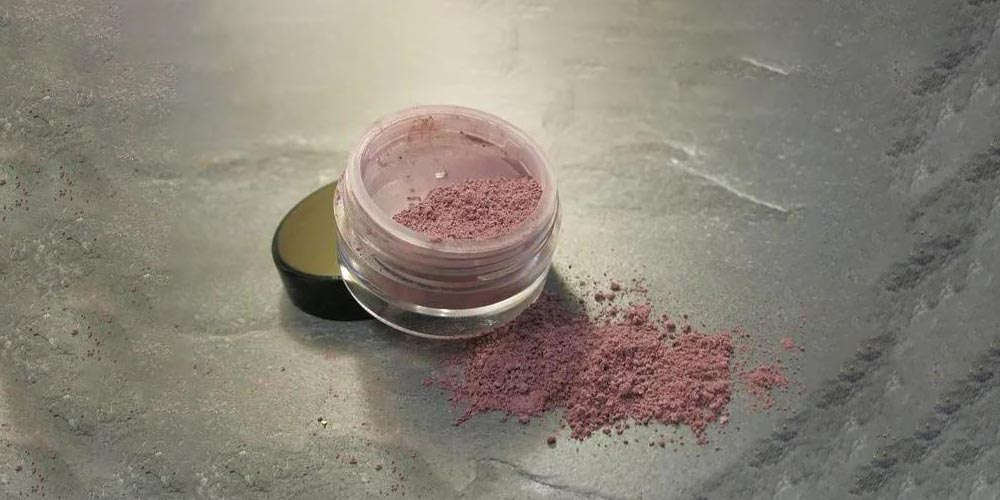

#05 Application in ceramics
Talc powder can be used to make high-frequency porcelain, radio porcelain, various industrial ceramics, architectural ceramics, daily-use ceramics and ceramic glazes. It has the characteristics of no discoloration at high temperature, increased whiteness after calcination, uniform density, good gloss and smooth surface.
Talc porcelain is made of mineral talc (3MgO.4SiO2.H2O) as the main raw material, adding appropriate amounts of clay and BaTi03 and other ingredients through mixing, grinding, molding and high-temperature sintering. The main crystal phase of talc porcelain is proto-enstatite, that is, magnesium metasilicate (the chemical formula is MgSio3), which is a kind of high-frequency structural ceramics with excellent electrical properties and low price. It is often used as insulating parts in high-frequency equipment.

The rapid development of science and technology has prompted the continuous emergence of various new materials, and the emergence of new materials is also boosting the development of science and technology. "Powder can be used as material, no fineness is not formed", powder processing technology plays a vital role in the development and application of materials. ALPA powder technology aims at ultra-fineness, ultra-purification, specific functions, safety and environmental protection, and provides front-end full-process services for the new material industry. Using steam mill technology, ultra-fine and low-cost production can be achieved. Taking talc as an example, the product has a particle size of 1μm and a sheet thickness of 300nm. Suitable minerals include talc, graphite, mica, wollastonite, kaolin, etc.
[Powder in life] Do you know how much powder is escorting your safety?
Powder fills our lives, and it exists in all aspects of our lives. In fact, they are still protecting our lives at all times, making our lives safer and more beautiful.
Removal of formaldehyde
In the development of the coating industry, formaldehyde has always played an important role: as an organic solvent for coatings to help the mixing and dispersion of coatings; enhance the scratch resistance and friction resistance of the coating; ensure the chemical stability of the coating for long-term storage...
However, the free formaldehyde in the paint will form a film as the paint dries, and will be released into the environment in the form of VOC, posing a great health threat to humans and other organisms in the environmental system. Long-term exposure to low-dose formaldehyde can cause chronic respiratory diseases, and serious diseases such as nasal cavity, oral cavity, throat, skin, and digestive tract cancers. Higher concentrations can cause nausea and vomiting, coughing, chest tightness, wheezing, pulmonary edema, and even immediate death.
At present, there are two commonly used methods of adsorbing formaldehyde, physical adsorption and chemical decomposition. Physical adsorption needs to select materials with physical adsorption, and use its surface structure to absorb free formaldehyde released in the environment. At present, the internationally popular adsorption materials mainly include the following types: diatomaceous earth, activated carbon, and medical stone. As a natural material, diatomaceous earth has a microporous structure that makes it have a good absorption effect on harmful gases such as formaldehyde, and achieves the effect of purifying the air.

Flame retardant and fire extinguishing materials
We often come into contact with them in our lives, ranging from daily necessities to large buildings, and there is a certain fire hazard. Human factors lead to missing and late reporting of electrical fires, and failure of alarm equipment to fail to recover in time. Many factors make fire accidents happen frequently. It is important to do a good job of prevention. The response measures when a fire occurs is also very important. Fire extinguishers are one of the most common fire extinguishing tools. The most commonly used fire extinguishers in general homes and public places are portable dry powder fire extinguishers. Firefighters also need to wear flame-retardant suits to protect themselves when fighting fires.
The dry powder fire extinguisher is equipped with dry powder fire extinguishing agent. This dry powder fire extinguishing agent is easy to flow and dry. It is composed of inorganic salt and crushed and dried additives, which can effectively fight the initial fire. Dry powder fire extinguishing agents are generally divided into two categories: BC dry powder fire extinguishing agents (sodium bicarbonate, etc.) and ABC dry powder (ammonium phosphate, etc.). It is mainly used to fight the initial fires of flammable liquids such as petroleum and organic solvents, combustible gases and electrical equipment.
Flame-retardant clothing is one of the most widely used types of personal protective equipment. The principle of flame-retardant clothing protection is mainly to take shielding effects such as heat insulation, reflection, absorption, and carbonization isolation. Flame-retardant clothing protects workers from open flames or heat sources. . It is widely used in oil fields, petrochemical industry, gas stations, chemical industry, fire protection and other occasions where there are various protection requirements for clothing. There are two main technologies for flame retardant clothing. One is to accelerate fiber dehydration and carbonization to reduce combustible substances to achieve flame retardancy, such as the ammonia treatment of Indura fabric and the treatment of cotton cloth by Proban; the other is to change the internal structure of the fiber through a chemical process. , Reduce combustible components, achieve the purpose of flame retardant, such as Nomex, PBI and PR-97TM and other self-flame retardant fibers.
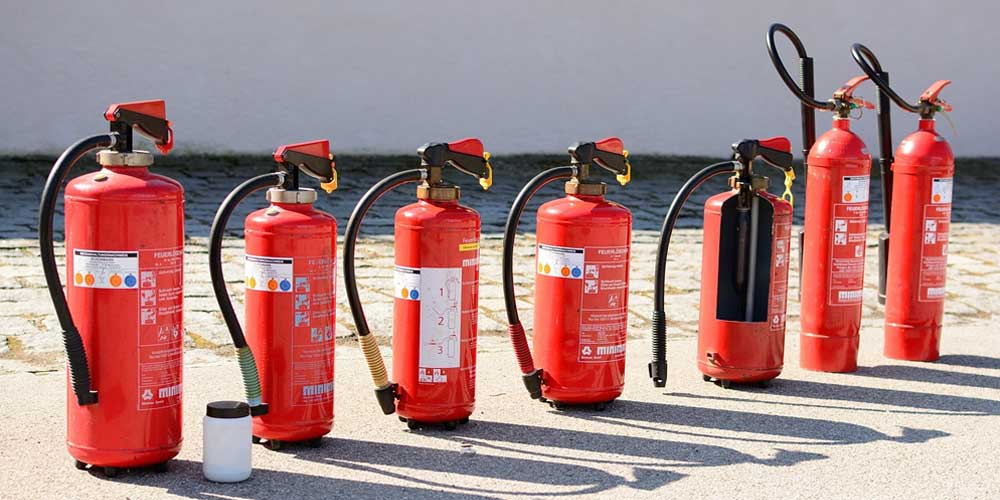
Car brake pads
Automobile brake pads, also called automobile brake pads, refer to the friction material fixed on the brake drum or brake disc that rotates with the wheel. The friction lining and the friction lining are subjected to external pressure and generate friction to achieve the deceleration of the vehicle. Purpose.
The choice of friction material determines the braking performance of the brake pads. The friction layer in the brake pad is composed of reinforcing materials, adhesives and fillers. Friction materials are divided into three types: asbestos, semi-metal and organic (NAO). The main powders added in these three materials are:
- Asbestos
Asbestos accounts for 40-60% of the composition of asbestos brake pads. Asbestos is composed of fiber bundles and has high fire resistance, electrical insulation and heat insulation properties, and is an important fireproof, insulation and heat preservation material.
- Rubber
The rubber is added as a reinforcing agent to make the friction material more wear-resistant. Because of its excellent viscoelasticity, it is often added to brake pads to reduce noise.
- Graphite
Graphite powder is a commonly used lubricant in some friction materials. During the friction process of brake pads, the debris generated due to wear will accumulate on the surface of the friction material to form a carbon phase friction layer, which is adhesive between the brake pad and the wheel. . Therefore, within a certain temperature range, graphite powder can increase the friction coefficient during braking.
- Alumina, zirconium silicate
Shi's new ceramic brake pads subvert the traditional concept of ceramic brakes. It is composed of ceramic fiber (the main component of alumina), non-ferrous filler material, adhesive and a small amount of metal. Adding alumina can increase the coefficient of friction and reduce the rate of wear; adding silicon carbide can greatly increase the coefficient of friction, while the wear rate is only a small increase; a certain amount of zirconium silicate has a great effect on the size and stability of the friction coefficient of automobile brake pads. Big impact.
- Other
Both barium sulfate and calcium carbonate are very commonly used fillers, which can improve the thermal stability of friction materials and at the same time improve the thermal decay performance of the materials, but at higher temperatures, the former is not as stable as the latter. Mica and vermiculite are two other commonly used fillers. They have a flat mesh structure and can suppress low-frequency braking noise. However, the vermiculite peels off rapidly at about 800°C, and the abrasion resistance of mica is poor at high temperatures.

Sunscreen
Moderate ultraviolet radiation can play the role of sterilization and promote vitamin D synthesis, but long-term exposure to ultraviolet rays, the UVA and UVB in the ultraviolet rays will cause serious damage to the skin, causing the skin to become dark, aging, sunburn, redness, and even swelling. Can cause skin cancer. In order to prevent ultraviolet rays from harming us, we need to take certain sun protection measures. In addition to hard sun protection such as sun protection clothing, sun umbrellas, and sun hats, soft sun protection such as sunscreen is also essential.
Sunscreen is divided into physical sunscreen and chemical sunscreen. The main components of physical sunscreen are titanium dioxide and zinc oxide. Titanium dioxide is mainly obtained from the decomposition of rutile with acid or titanium tetrachloride. Most skin care products and cosmetics contain titanium dioxide; oxidation; Zinc is a hardly soluble oxide in water. It has astringency and a certain sterilization ability, which can make almost all wavelengths of UV attack ineffective, and is not easy to sensitize. When the two powders are used as physical sunscreens, they are usually nano-level. , Will not penetrate the stratum corneum of the skin.

Medicine
Medicines and nutrients protect your body at all times. Did you know that these common medicines are also made of powder?
Montmorillonite powder for adults and children with acute and chronic diarrhea. The main ingredient is montmorillonite, which is a layered mineral composed of extremely fine-grained hydrous aluminosilicate; used to treat acute itching such as urticaria and rash Calamine lotion for skin diseases, its main ingredients are calamine (a carbonate mineral calcite family smithsonite, mainly containing zinc carbonate), zinc oxide; bezoar detoxification tablets for heat-clearing and detoxification, its main component is artificial bezoar , Realgar, gypsum, rhubarb, scutellaria, platycodon, borneol, licorice, realgar, is the common name of tetraarsenic tetrasulfide (As4S4), is an ore containing sulfur and arsenic, gypsum is a monoclinic mineral, is the main chemical component It is a hydrate of calcium sulfate (CaSO4).

After 20 years of continuous research and exploration, ALPA has more advanced technical experience in fine chemical grinding and crushing. Including pharmaceutical, coating, paint, light industry, powder metallurgy, building materials, chemical industry and other industries, the use of ultra-fine powder technology to easily handle different raw materials, the size of the material particles is from 2mm to 2μm. Thereby greatly improving the utilization rate of materials and effectively improving production efficiency. Using jet mill technology, ultra-fine and ultra-pure production can be realized, and it is suitable for processing high value-added minerals such as talc and medical stone.
[Powder in life] Calcium carbonate around us
Calcium carbonate, CaCO₃, is an inorganic compound, also known as limestone, marble, etc. Calcium carbonate is neutral, basically insoluble in water, but soluble in hydrochloric acid. It is one of the common substances on the earth. It exists in aragonite, calcite, chalk, limestone, marble and other rocks. It is also the main component of animal bones or shells. Calcium carbonate is an important building material with a wide range of industrial uses. It is widely used in papermaking, metallurgy, glass, alkali making, rubber, medicine, pigments, organic chemicals and other sectors.
Rubber
Calcium carbonate is one of the earliest and largest fillers used in the rubber industry. Calcium carbonate is filled in a large amount of rubber products, which can not only increase the volume of the products, but also save expensive natural rubber or synthetic rubber to achieve the purpose of reducing costs. Nanometer ultrafine calcium carbonate has the characteristics of ultrafine and ultrapure. The crystal shape and particle size are effectively controlled during the production process, and the surface is modified. Therefore, it has a three-dimensional structure in the rubber and has a good dispersion. It can improve the reinforcing effect of the material.
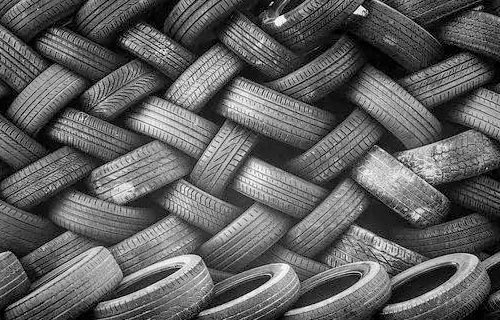
Papermaking
Calcium carbonate is mainly used as a filler for paper in papermaking. Adding a large amount of calcium carbonate to the paper can ensure a certain strength and whiteness of the paper and reduce the cost at the same time. The large-scale use of calcium carbonate in the paper industry is based on the fact that the international paper industry has switched from acidic papermaking to alkaline or neutral papermaking processes, so that a large amount of inexpensive calcium carbonate can be used instead of talc and china clay.
Calcium carbonate as a papermaking filler has the following advantages: ①high whiteness; ②bulkness; ③durability; ④breathability; ⑤can be used as a supplement for titanium dioxide; ⑥low abrasiveness; ⑦improving softness; ⑧improving ink absorption performance ⑨Low absorption of ultraviolet rays; ⑩Can control combustibility.

Ink & Paint
In the ink industry, stearic acid modified calcium carbonate is used. The formulated ink has good viscosity, good printing performance, and high stability. The fine particles are easily compatible with other raw materials, so the printed product is smooth , The dots are complete, the covering power is strong, and the gloss is high. As a filler, heavy calcium can improve the gloss and brightness of the ink.
Calcium carbonate can be used as a white pigment in coatings to act as a skeleton. Calcium carbonate can be used as an extender pigment in the coating industry. Because calcium carbonate is white in color, relatively latex in paint, the solvent price is cheaper, and the particles are fine, and it can be evenly dispersed in paint, so it is a large amount of extender pigment used. Due to the improvement of environmental protection awareness, a large number of water-based paints have been used in architectural coatings. Because calcium carbonate is white, hydrophilic, and inexpensive, it has a wide range of application prospects.

Plastic
Calcium carbonate is widely used in filling polyvinyl chloride (PVC), polyethylene (PE), polypropylene (PP), acrylonitrile butadiene-styrene copolymer (ABS) and other resins. Adding calcium carbonate has a certain effect on improving certain properties of plastic products to expand their application range. In plastic processing, they can reduce resin shrinkage, improve rheology, control viscosity, and can also improve the dimensional stability of plastic products and improve plastics. The hardness and rigidity of products can improve the processing performance of plastics, improve the heat resistance of plastic products, improve the astigmatism of plastics, and reduce the cost of plastic products.
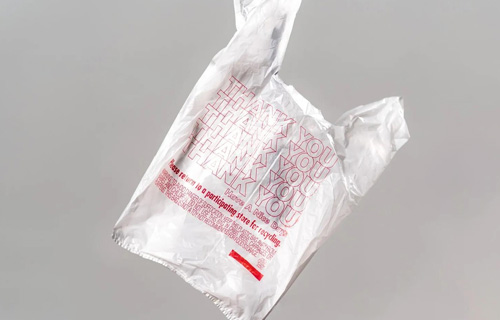
Cosmetic
Adding nanometer calcium carbonate to cosmetics can make the products delicate and smooth, and improve the performance and quality of the products. It is used as an additive to make makeup setting powder, which can eliminate the brightness of the foundation, protect the adhesion of the skin, and has a moderate oil absorption and anti-perspiration effect. It can also be used as a smooth powder, does not irritate the skin, has a uniform color, and has a certain hiding power. The current development trend of cosmetics at home and abroad is curative, functional and natural. Nanometer calcium carbonate meets food and pharmaceutical standards. It meets the special requirements of cosmetics and is expected to be fully used in more and more high-end cosmetics.

Food
As a food additive, calcium carbonate should be added in a small amount, usually no more than 2%, to ensure the intake of calcium necessary for the human body. In some foods (such as chewing gum and chocolate), calcium carbonate is used as a fortifier, which not only reduces costs, but also serves as a matrix material.
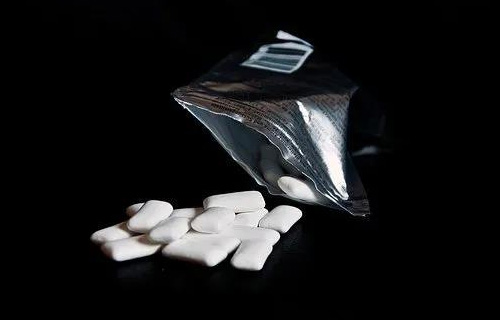
Construction & Decoration
Calcium carbonate plays an important role in concrete in the construction industry. It can not only reduce production costs, but also increase the toughness and strength of the product.
Calcium carbonate is mainly used in the production process of fireproof ceilings, which can improve the whiteness, brightness and fireproof performance of the product.
Pure and impurity-free calcium carbonate is used in the floor tile industry to increase the whiteness and tensile strength of the product, improve the toughness of the product, and reduce the production cost.

Breathable membrane
Calcium carbonate material can be added to the breathable membrane as a breathable material. It is one of the important components in the production and processing of the breathable membrane material. The carrier is formed by adding a certain proportion of calcium carbonate and being stretched, so that the breathable film has a unique, high-density distribution, and numerous interconnected micropores with special structures.

In the field of non-metallic minerals such as calcium carbonate, ALPA will provide you with more options, including ball mill classification technology, steam mill technology, jet mill technology and other different methods for non-metallic mineral processing, which can be targeted at multiple A variety of non-metallic minerals of different materials are processed. And can achieve the highest coverage rate with the least modifier through surface modification technology. In the field of high-end calcium carbonate applications, ALPA occupies 70% of the market.
The ball mill classification process can realize large-scale and low-cost production. Taking calcium carbonate as an example, the annual output of a single production line of D97:μm products can reach 100,000 tons, and the energy consumption per ton of product is 150 kWh. Surface modification technology meets the application of minerals in the rubber and plastic industry, such as three-roll continuous modification process, eddy current mill continuous modification process, pin mill continuous modification process, high agitator intermittent modification process, etc., which can be used according to different materials Different modification processes and modifiers achieve the highest coverage rate with the least modifiers. The adding amount of modifier is about 0.8~1.2%, and the coating rate can reach about 98%.
[Powder in life] Maybe you don’t know, your whole life is closely related to powder
When it comes to powder, many people think that it is an unreachable industry, far away from their own lives, and seems to have no intersection with ordinary people's lives. As everyone knows, powder is full of our daily life. From birth, powder has been with everyone's life.
When you are a baby waiting to be fed, powdered milk is almost all of your life, and the processing technology of powdered milk involves dry processing. All raw materials such as base powder (milk powder, skimmed milk powder, whey powder, etc.) and various nutrient ingredients are weighed, sterilized and mixed in the required proportions in a dry state, and finally packaged and shipped to become the final product to millions of households. The dry process has a short production cycle, easy addition of nutrients, and small loss of nutrients; because the production can use milk-based raw materials produced in advance, it is not controlled by factors such as milk production season and milk production.
As the most important raw material for diapers, non-woven fabrics are composed of directional or random fibers, which are moisture-proof, breathable, flexible, light, non-combustible, easy to decompose, non-toxic and non-irritating, rich in color, low in price, and can be used. Features such as recycling. In the non-woven fabric production process, calcium carbonate powder is added in order to increase the weight or hardness of the fabric. Calcium carbonate powder generally chooses calcite with good fluidity, low oil absorption, high whiteness, and less impurities as the master batch powder.

When your parents start to add supplementary food for you, the seasonings in the dishes on the table are inseparable from powder. In China, wheat and rice are the main raw materials for making staple foods, and their quality has a significant impact on the processing and eating quality of traditional noodles such as noodles, steamed buns, and rice. Airflow classification technology has made outstanding contributions to its quality improvement. Airflow classification is the use of different particle size particles in the gas medium (usually air), the combined effects of gas drag, own gravity, inertial force, and centrifugal force are different. The coarse particles settle and the fine particles are carried away, thereby separating the coarse and fine particles.
After air classification, the different components of wheat flour exhibit different physical and chemical properties and rheological properties, enrich the nutrients in wheat flour, and provide special wheat flour, flour additives, flour improvers and functional flour made from colored wheat. Way.

When you start to babble and walk into kindergartens, elementary schools, junior high schools, high schools, and universities, the pencil becomes your longest companion. The raw materials of modern pencils are mainly graphite powder and white clay powder. Graphite powder is an important non-metallic material. Graphite powder is widely used in petroleum, chemical, lubrication, sealing, conductive and other industrial fields. The raw ore after blasting is sent to the rock breaker through the mine cart to be crushed, and then the ball mill is used for flotation and selection. The dry material is sent to the drying workshop, dried and then bagged, that is, ordinary graphite powder, and the average carbon content of the product is 90%.

When you graduate to work, coffee has become the standard to witness every night of your struggle. The roasted coffee beans are ground to form fine powders. This process accelerates the release of CO2 gas and volatile aromas in the cooked beans, improves the extraction efficiency of soluble flavor substances, and affects the flavor and mouthfeel of the finished product. The size of coffee particles is related to the extraction of soluble and volatile substances, and the size of the particles depends on the characteristics of the relevant equipment and operating technology used when grinding coffee.
Grinding degree refers to the ratio of the increase in the total surface area of coffee beans after grinding into particles to the surface area of the original coffee beans. The greater the grinding degree, the smaller the coffee particles, and the easier it is to extract the bitter substances (caffeine, trigonelline, etc.) in the coffee, and the more significant the bitterness of the coffee; on the contrary, the more sour.

When you finally have savings, with your own house and car, powder is also inseparable from all aspects of new house decoration. The most representative and most important building material is putty. Putty is generally made of base materials, fillers, It is composed of water and additives. The filler mainly plays a filling role. Commonly used are calcium carbonate, talcum powder and quartz sand. Calcium carbonate is the main filler in the putty, and a small amount of lithopone is added to increase the viscosity and prevent the paint from loosening. At the same time, precipitate calcium carbonate is appropriately added to facilitate drying and polishing.
With the popularity of new energy vehicles today, lightweight has gradually become a new trend in automobile production, and "plastics instead of steel" has successfully emerged from many solutions. However, ordinary plastics cannot meet the performance requirements of automotive applications. At this time, it is necessary to use powder to modify the plastics. Mineral-reinforced and toughened plastics are one of the most common ways of modification. Commonly used mineral powders include calcium carbonate, talc, wollastonite, mica powder, glass beads and so on.

When you retire gloriously and start to learn about maintenance, medicines and nutrients are always protecting your body. Did you know that these common medicines are also made of powder? Montmorillonite powder for adults and children with acute and chronic diarrhea. The main ingredient is montmorillonite, which is a layered mineral composed of extremely fine-grained hydrous aluminosilicate; used to treat acute itching such as urticaria and rash Calamine lotion for skin diseases, its main ingredients are calamine (a carbonate mineral calcite family smithsonite, mainly containing zinc carbonate), zinc oxide; bezoar detoxification tablets for heat-clearing and detoxification, its main component is artificial bezoar , Realgar, gypsum, rhubarb, scutellaria, platycodon, borneol, licorice, realgar, is the common name of tetraarsenic tetrasulfide (As4S4), is a sulfur and arsenic ore, gypsum is a monoclinic mineral, is the main chemical component It is a hydrate of calcium sulfate (CaSO4).
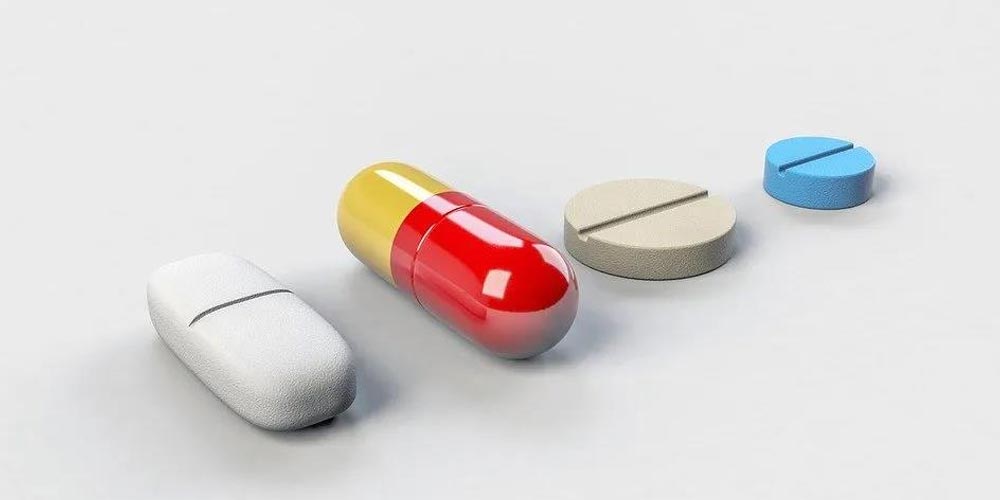
ALPA is a well-known provider of ultra-fine powder ending solutions in China, focusing on ultra-fine ultra-pure pulverization and classification research, powder shape control and selective pulverization, split surface modification, and system integration of split engineering equipment. solution. The areas involved include non-metallic minerals, medicine, food, plastic products, high-tech materials, plastics, ceramics, etc., and have summarized and counted the ultra-fine grinding and classification solutions for tens of thousands of materials for more than 3000 companies at home and abroad.
Committed to green environmental protection, ALPA holds the dual-carbon code
With the continuous development of the economy and society, environmental protection issues have gradually come into people's sight. Green mountains and green mountains are golden mountains and silver mountains. At the General Debate of the 15th United Nations General Assembly, the United Nations Biodiversity Summit, the Twelfth Meeting of BRICS Leaders, the Climate Ambition Summit and the 2020 Central Economic Work Conference, President Xi Jinping The secretary has repeatedly stated that China's carbon dioxide emissions will strive to reach the peak before 2030, and strive to achieve carbon neutrality by 2060. "Carbon peak" and "carbon neutral" have also become fresh vocabulary hotly discussed by the media and the people.
"Carbon peaking" refers to my country's commitment that carbon dioxide emissions will no longer increase before 2030, and will gradually decrease after reaching the peak.
"Carbon neutrality" refers to the calculation of the total amount of greenhouse gas emissions produced directly or indirectly by enterprises, groups or individuals within a certain period of time, and then through plant afforestation, energy conservation and emission reduction, etc., to offset their own carbon dioxide emissions, to achieve "Zero emission" of carbon dioxide.
In recent years, my country has actively participated in carbon emission reduction in the international community, actively conformed to the global trend of green and low-carbon development, and actively deployed carbon neutrality, which has already met the conditions for achieving carbon neutrality.
Responding to the call of the country and realizing healthy and sustainable development, ALPA has been in action!
-
In terms of battery materials
ALPA provides crushing and grading of cathode materials, crushing and shaping of anode materials, crushing and grading of battery fluid materials, system integration, including integrated design of dust-free feeding, magnetic separation and other powder processes. The lining of the equipment can be selected from ceramic materials such as alumina, zirconia, silicon carbide, silicon nitride, etc. according to the needs of battery products, which minimizes the intake of impurities and ensures the purity of the product. In addition, the system adopts closed-loop inert gas protection, the air content is always kept low, and the water intake is reduced as much as possible. The MQW series jet pulverizing production line follows the concept of environmental protection, adopts plastic sintered board to filter and remove dust, and the filtration accuracy can reach 0.1μm. The entire system is closed for operation, with less dust, low noise, clean production process and low emissions.
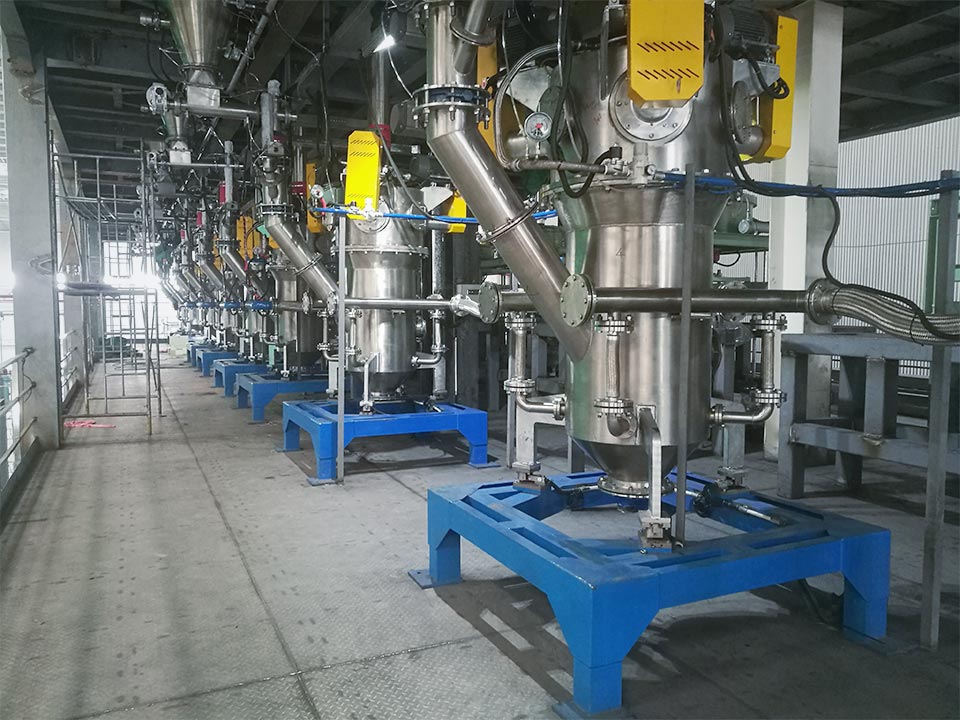
Lithium iron phosphate and single crystal ternary jet mill production line
-
In terms of environmental desulfurization
ALPA introduces the advanced grinding technology of European sodium bicarbonate desulfurizer. The self-developed sodium bicarbonate (baking soda) special pulverizer can effectively remove 95% of SO₂ and 99% of HCL in the exhaust gas. It has high efficiency and low cost, and is widely used Municipal waste incineration, hazardous waste incineration, and sludge incineration, and help sewage companies such as cement plants, glass plants, and steel plants coke ovens to achieve discharge standards. The crushing system of the special sodium bicarbonate crusher is airtight, with less dust and low noise, ensuring a clean and environmentally friendly production process. It has helped large chemical companies in Beijing, Henan, Shanxi and other places to solve the problem of vulcanization pollution in their production lines.
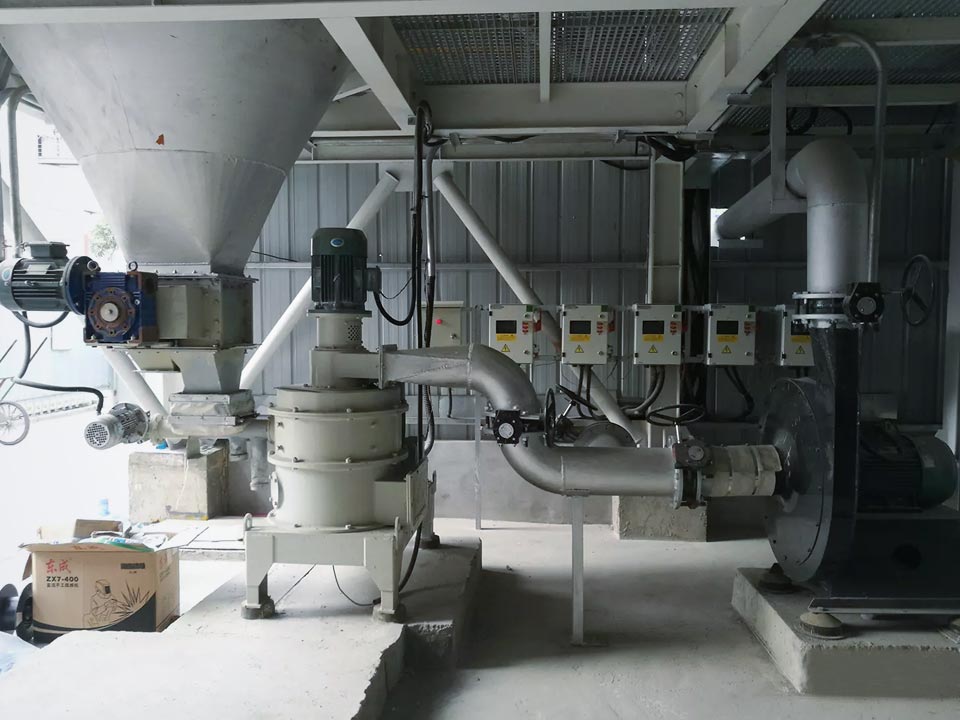
Desulfurizer crushing production line
-
In the field of construction solid waste
After continuous research and exploration by dozens of scientific research experts, ALPA has independently developed a combined treatment of metallurgical slag, steel slag, chemical After the treatment of industrial solid waste such as gypsum and coal ash, scientific research results of high-quality and stable building materials have been obtained. While eliminating waste and protecting the environment, it can also extract the potential value of solid waste building materials. The ALPA special ball mill for steel slag optimizes the aspect ratio of the ball mill, provides a more ideal output and fine powder rate, avoids excessive grinding, and improves the grinding efficiency; the grinding cavity size and opening size are optimized. Design the size and material of the grinding media according to the product fineness requirements to improve the grinding efficiency; greatly reduce the grinding energy consumption and save energy and operating costs.
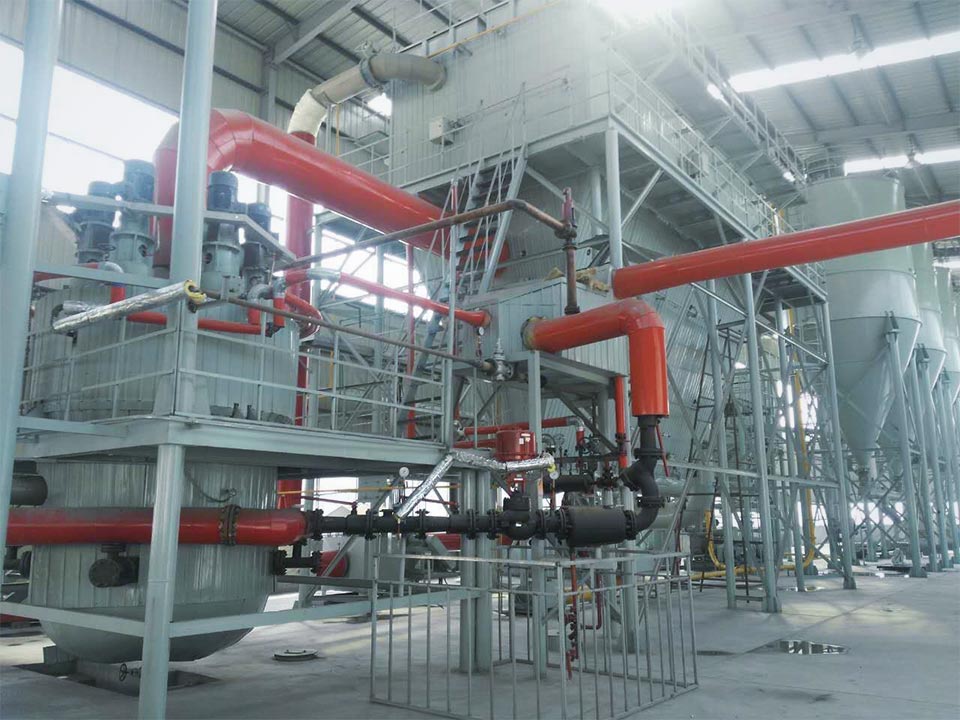
Fly ash crushing processing production line
Ecological civilization and green and healthy development are not only realistic demands, but also the inner self demands of ALPA people. Conserving resources, protecting the environment, and achieving innovative, coordinated, green, open, and shared development will benefit the present and future generations. Starting from technology, starting from practice, and starting from value, ALPA never stops.
Application of Talc and Calcium Carbonate in Degradable Plastics
In recent years, China’s packaging plastics are about 4 million tons, of which disposable plastic packaging that is difficult to recycle accounts for about 30%, and the annual plastic packaging waste is about 1.2 million tons; plastic film is more than 400,000 tons, due to its thinness ( 8μm or less), after use, it is broken in the farmland and mixed with a large amount of sand, which is difficult to recycle; the disposable daily sundries that are difficult to recycle and the medical supplies that are not suitable for recycling are about 400,000 tons.
In recent years, biodegradable plastics have been the most popular. According to the source of raw materials, biodegradable plastics can be divided into petroleum-based and bio-based plastics. Petroleum-based degradable plastics mainly include: polybutylene succinate (PBS), polyadipate/butylene terephthalate (PBAT), polyglycolic acid (PGA), polycaprolactone (PCL), etc. ; Bio-based degradable plastics mainly include: polylactic acid (PLA), starch, cellulose, etc.
Taking into account factors such as material degradability and cost, the current biodegradable plastics on the market generally choose starch, cellulose, etc. as fillers. The composite of starch and polymer materials can be made into degradable materials. Generally, starch or its derivatives are added as additives to synthetic polymers to improve the biodegradability of synthetic polymers. When the material is degraded, the porous polymer remaining due to the degradation of starch is prone to further degradation reactions such as oxidation. However, starch, cellulose and resin have poor compatibility, insufficient temperature resistance, and high cost, so they are not suitable for large-scale filling.
Non-metallic mineral powders such as talcum powder and calcium carbonate, low price, environmentally friendly, sufficient raw materials, high fineness, good whiteness, easy color matching, can improve the dimensional stability, temperature resistance, rigidity of plastic products, and improve plastics Processing performance, etc.
Talcum powder
The addition of talc powder to biodegradable plastics can increase the rigidity, heat distortion temperature, dimensional stability, surface hardness, etc.; at the same time, ultrafine talc powder can also be used as an inorganic nucleating agent for polylactic acid (PLA), adding an appropriate amount of super Fine talc powder can increase the crystallinity and crystallization rate of polylactic acid, and greatly improve its mechanical properties.
Talc has three functions in the modification of polylactic acid:
- Reduce cost: The preparation method of talc-filled polylactic acid composite material provides a heat-resistant polylactic acid composite material preparation technology and method with beautiful appearance, good rigidity, short product molding cycle, light weight and low price.
- Improve strength: the natural talc powder is melt blended, and the composite material is a completely biodegradable material; it has excellent mechanical properties, and the tensile strength can reach 50~70MPa.
- Improve heat resistance: Polylactic acid has better heat resistance due to its own crystallization and the promotion of crystallization of nucleating agent talc.
Calcium carbonate
Calcium carbonate is filled with biodegradable plastics, which can accelerate the degradation of biodegradable plastics. At the same time, calcium carbonate can be directly used by some inorganic nutrient microorganisms as a carbon source. The organic acids and nitrifying bacteria and sulfides produced by microorganisms in the soil Both nitric acid and sulfuric acid produced by bacteria can further improve the solubility of calcium carbonate.
The role of calcium carbonate in biodegradable plastics:
- Promote degradation: Calcium carbonate particles increase the distance between resin molecules, reduce the force of polymer chains, hinder the re-crosslinking of macromolecular free radicals, promote free radical chain scission caused by photodegradation, and accelerate biodegradation of plastics的degradation.
- Easy to decompose: When buried in a humid environment, calcium carbonate can chemically dissolve, and it is directly used by some inorganic nutrient microorganisms as a carbon source.
- Reduce viscosity and improve fluidity: The calcium carbonate after surface treatment increases the viscosity of the degraded plastic, improves the fluidity of the material, and reduces energy consumption.
Traditional disposable non-degradable plastic products have been widely used in food delivery, e-commerce and other industries, but the subsequent processing is more complicated, which limits their development. Therefore, higher requirements are put forward for the development and innovation of biodegradable plastic production and processing technology. In future research, according to the needs of the biodegradable market, we will in-depth study the application of suitable inorganic non-metal powders to achieve the purpose of improving the degradability of biodegradable plastics and make a contribution to the realization of a green and sustainable development of a friendly environment.
How to choose the grinding media ball of the ball mill?
During the use of the ball mill, the choice of grinding media is very important. Grinding media is affected by many factors such as material, filling amount, shape, particle size, etc. In the grinding process, using different grinding media for different materials, models, and equipment can reduce production costs and improve production efficiency.
Media density, hardness, size
The greater the density of the grinding media, the shorter the grinding time. In order to increase the grinding effect, the hardness of the grinding medium must be greater than the hardness of the material to be ground. According to long-term experience, the Mohs hardness of the medium is better than the hardness of the material to be ground by more than 3 levels. In addition, the smaller the size of the grinding media, the more media contact points, and the more opportunities for grinding materials.
Media filling quantity
The filling quantity has a direct influence on the grinding efficiency, and the particle size of the grinding media determines the filling quantity of the grinding media. It must be ensured that when the grinding medium moves in the disperser, the void ratio of the medium is not less than 40%.
For different fineness requirements, it is necessary to adjust the capacity distribution of grinding media for crushing and grinding, with high filling rate and strong grinding ability. High filling rate is generally used for superfine grinding.
Material
The grinding material determines the cost and efficiency of grinding. Grinding materials can be divided into three types: metallic media, rock mineral materials and non-metallic materials. In addition to considering the production cost, the choice should also consider whether the materials and media will cause pollution.
Commonly used grinding media include steel balls, alumina balls, and zirconia balls.
Shape and size
Grinding media are generally spherical, because other irregularly shaped media will wear themselves and cause unnecessary pollution. The size of the medium directly affects the grinding efficiency and the fineness of the product. The larger the diameter, the larger the product particle size and the higher the output; on the contrary, the smaller the medium particle size, the smaller the product particle size, and the lower the output. In actual production, it is generally determined according to the feed size and required product fineness.
Media ratio
Generally speaking, in the continuous grinding process, the size of the grinding media is distributed regularly, and the size ratio of the media is directly related to the big problem of whether the grinding ability can be exerted and how to reduce the wear of the media. In the process, the fixed media ratio will not always be maintained. In the production, the method of supplementing large balls is often used to restore the grinding of the system. It is difficult for the mill to maintain a fixed medium ratio for a long time, and the medium diameter difference is too large It will aggravate the ineffective grinding between the media and increase the cost of the grinding process;
In the production process, it is necessary to explore the appropriate ratio according to the type of material and process characteristics, and remove the medium that is too small in time to reduce the cost.
Abrasion resistance and chemical stability
The wear resistance and chemical stability of the grinding media are important conditions for measuring the quality of the grinding media. The non-wearable media needs to be supplemented due to abrasion, which will not only increase the cost, but also affect the production.
In the specific grinding process, the grinding medium needs to have a certain degree of chemical stability, and cannot chemically react with the material during the grinding, causing pollution to the material.
Modification method of silicon powder
Ultrafine silicon powder is an important inorganic filler in copper clad laminates. It can improve the thermal expansion coefficient, bending strength, dimensional stability, etc. Performance requirements such as reduced electrical constant and reduced dielectric loss, so there are higher requirements for silicon micropowder, such as finer particle size, can improve the bonding force of the resin, low expansion rate, low dielectric constant, low dielectric loss, etc.
However, the finer the particle size and the larger the specific surface area, the more agglomerated silicon powder is, the higher the oil absorption, the greater the difference with the resin polarity, the greater the viscosity, and the worse the binding force. Therefore, it is necessary to use a suitable powder to modify The surface modification of the ultra-fine silicon powder (by combining with the functional groups on the surface of the ultra-fine silicon powder to form a stable covalent bond, so that the performance of the ultra-fine silicon powder is more stable and effectively combined with the resin), then the How to modify the surface of ultra-fine silicon powder, and how to modify it to be uniform?
- Dry modification of ultrafine silicon powder:
The dry modification method is relatively straightforward and has the lowest cost. It is mainly through modification equipment (high-speed mixer, continuous modifier) with powder modifier, synchronized stirring and spraying additives to achieve the modification effect, but If it is nano-level silicon powder, the molecular force is very large, and the purely applied mechanical force cannot open the agglomerates and cannot achieve the purpose of uniform modification. Therefore, the particle size of the ultra-fine silicon powder targeted by the dry modification method is basically all In the micron level.
- Wet modification of ultrafine silicon powder:
The method of wet modification of ultrafine silicon powder is mainly carried out under liquid phase conditions. By using a powder modifier containing amphiphilic groups or a powder modifier that can increase activity, let the solvent react to the ultrafine powder. The surface of the silicon powder is wetted to reduce the surface energy, and then the powder modifier can be effectively adsorbed to the surface of the ultrafine silicon powder to achieve a very high modification uniformity. However, after the wet modification, drying and drying are required. The filter cake is broken up, and the cost and operation process are relatively troublesome. At present, there are also companies that modify the surface of silicon powder through the chemical method of gas phase synthesis to reach the nanometer level.
To sum up, to meet the needs of surface modification of ultra-fine silicon powder used on different copper clad laminates, the modification method mainly selects suitable powder modifiers for dry modification, wet modification, and chemical modification. Modification, while in the modification process, the more uniform the modification, the better the effect.
What factors are related to the surface modification effect of ultrafine powder?
Powder surface modification is mainly to reduce the energy of ultra-fine powder to achieve uniform dispersion. The effect of powder surface modification depends on powder processing technology, back-end product processing technology and system compatibility, material formulation, etc. Factors are related.
- The nature of powder raw materials
The specific surface area, particle size, particle size distribution, specific surface energy, surface physical and chemical properties, and agglomeration of the powder raw materials all have an impact on the modification effect, which is one of the important factors in the selection of powder modifier formulations, process methods and equipment.
For example, the physical and chemical properties of the surface of the powder, such as surface electrical properties, wettability, functional groups or groups, dissolution or hydrolysis characteristics, directly affect its interaction with the powder modifier molecules, thereby affecting the effect of its surface modification . At the same time, the physical and chemical properties of the surface are also one of the important factors in choosing the surface modification process.
- Powder modifier formula
The surface modification of the powder is to a large extent achieved by the action of the powder modifier on the surface of the powder. Therefore, the formula (variety, dosage and usage) of the powder modifier has an important influence on the modification effect of the powder surface and the application performance of the modified product. The powder modifier formula is very specific, that is, it has the characteristics of "a key to open a lock". The formula of powder modifier includes selection of varieties, determination of dosage and usage, etc.
When selecting a powder modifier, the properties of the powder raw materials, the use or application field of the product, as well as factors such as process, price and environmental protection should be considered comprehensively, and according to the structure and properties of the powder modifier and its relationship with the powder Mechanism of action, targeted selection.
- Superfine surface modification process
After the powder modifier formula is determined, the surface modification process is one of the important factors affecting the surface modification effect. The surface modification process should meet the application requirements or application conditions of the powder modifier, have good dispersibility to the powder modifier, and be able to achieve uniform and firm coating of the powder modifier on the powder surface; at the same time, the process is required Simple, good parameter controllability, stable product quality, low energy consumption and low pollution.
Therefore, at least the following factors should be considered when choosing a surface modification process:
①The characteristics of the powder modifier, such as water solubility, hydrolysis, boiling point or decomposition temperature, etc.;
②Whether the front-stage crushing or powder preparation process is wet or dry? If it is a wet pulverization process, a wet modification process can be considered;
③Surface modification method. The method determines the process. For example, for surface chemical coating, either dry or wet process can be used; but for precipitation coating of inorganic powder modifier, only wet process can be used.
At present, the commonly used surface modification processes mainly include dry process, wet process, pulverization and surface modification combined into one process, drying and powder modifier use methods combined into one process, etc.

